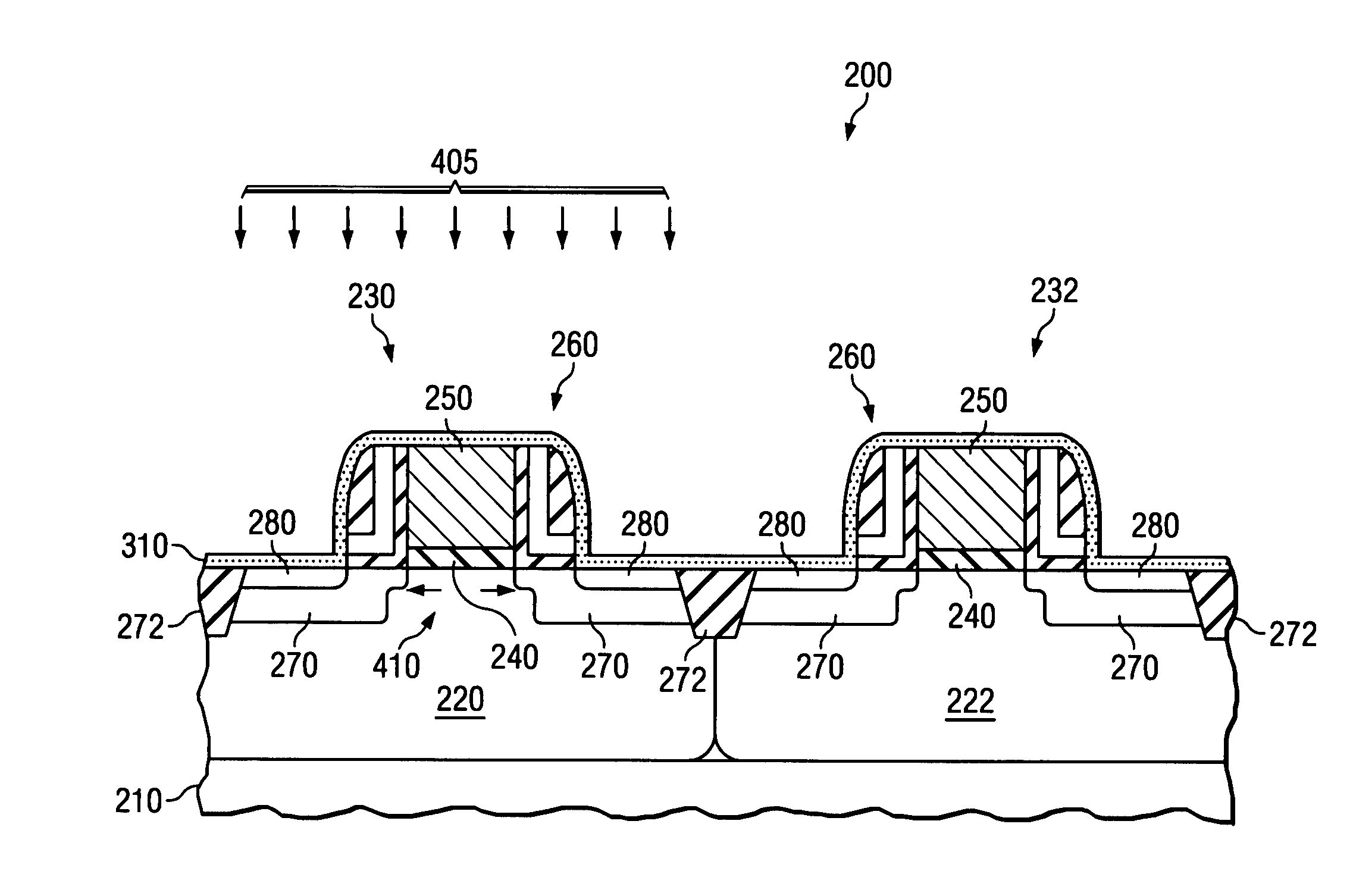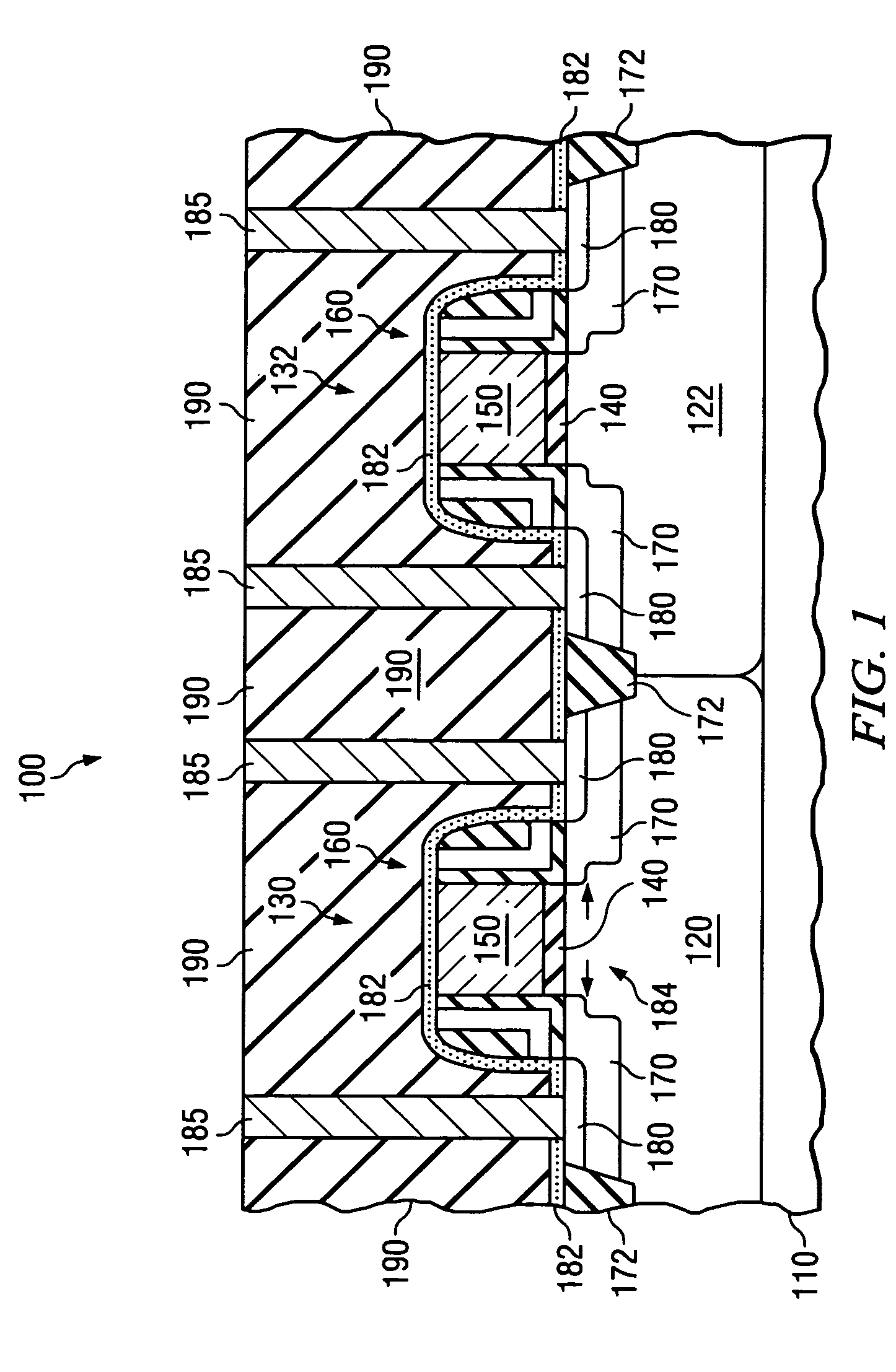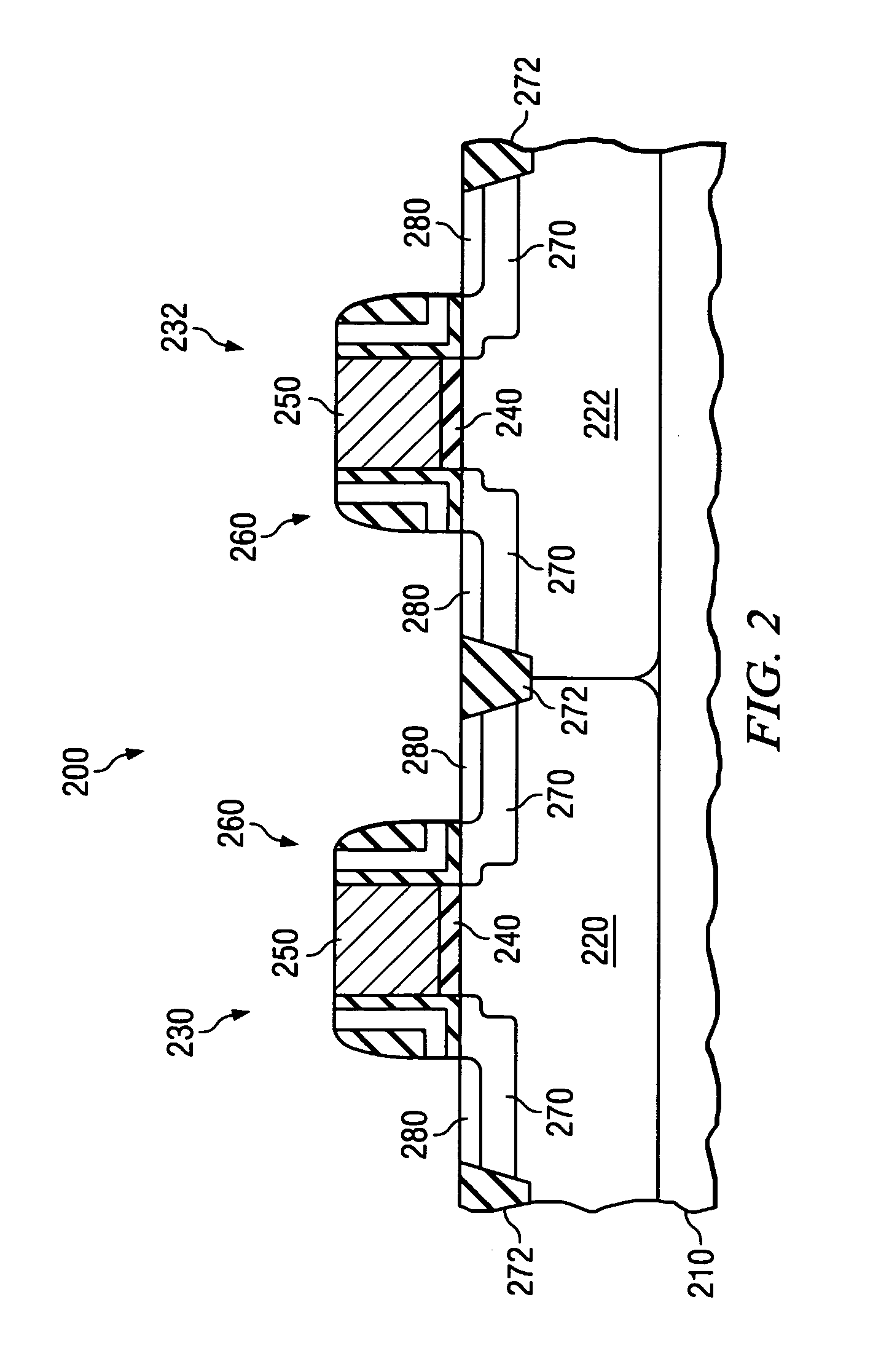Method of fabricating a microelectronic device using electron beam treatment to induce stress
a microelectronic device and electron beam technology, applied in semiconductor/solid-state device manufacturing, basic electric elements, electric apparatus, etc., can solve problems such as limiting scalability and device performance, limiting channel mobility, and limiting the benefits obtained from the use of such liners, which have begun to encounter process limitations
- Summary
- Abstract
- Description
- Claims
- Application Information
AI Technical Summary
Problems solved by technology
Method used
Image
Examples
Embodiment Construction
[0018] Turning initially to FIG. 1, there is illustrated a partial sectional view of one embodiment of a microelectronics device 100, as provided by the present invention. The microelectronics device 100 includes a conventional semiconductive substrate 110, such as appropriately doped silicon. Other semiconductive materials well known to those skilled in the art may also be used. Located within the substrate 110 in the embodiment of FIG. 1 are complementary doped well regions 120 and 122. Located over the substrate 110 and well regions 120 and 122, respectively, is an NMOS gate structure 130 and a PMOS gate structure 132. In this particular embodiment, the gate structures 130, 132 are complementary NMOS and PMOS devices, with the NMOS device being located over the well region 120 and the PMOS device being located over the well region 122. However, it should be understood that the present invention is not limited to a particular device configuration. For example, in certain embodimen...
PUM
 Login to View More
Login to View More Abstract
Description
Claims
Application Information
 Login to View More
Login to View More - R&D
- Intellectual Property
- Life Sciences
- Materials
- Tech Scout
- Unparalleled Data Quality
- Higher Quality Content
- 60% Fewer Hallucinations
Browse by: Latest US Patents, China's latest patents, Technical Efficacy Thesaurus, Application Domain, Technology Topic, Popular Technical Reports.
© 2025 PatSnap. All rights reserved.Legal|Privacy policy|Modern Slavery Act Transparency Statement|Sitemap|About US| Contact US: help@patsnap.com



